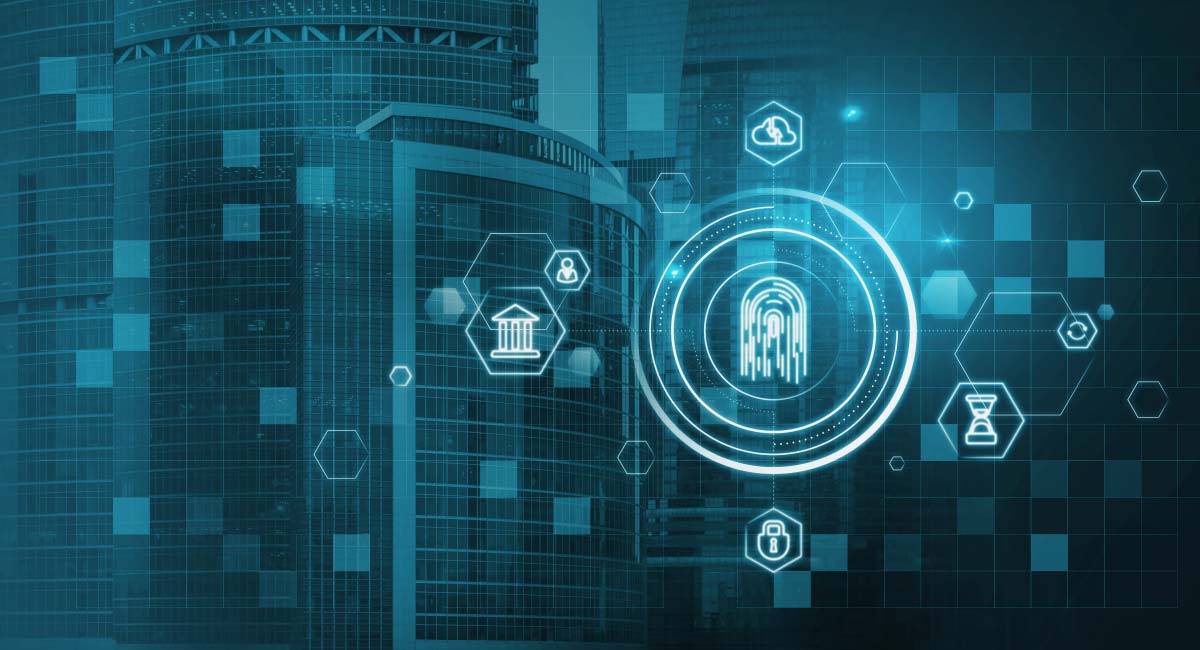Countries fortify their defenses through robust national security policies. Cybersecurity is similarly crucial in the digital world. Organizations protect their internal infrastructure and user data by implementing strong cybersecurity measures. However, standardization is essential to establish effective paradigms for these policies. This is where cybersecurity compliance comes into play.
In this guide, we will dive into the fundamentals of cybersecurity compliance, including its definition, significance, and advantages. We will also outline the key standards enterprises must adhere to and provide insights on ensuring compliance. Additionally, we will explore how enrolling in a comprehensive cybersecurity bootcamp can equip you for a successful career in this rapidly evolving field.
What is Cybersecurity Compliance?
Cybersecurity compliance refers to the suite of regulatory requirements and standards that enterprises must adopt and comply with. Implementing it enables enterprises to adequately protect user data and demonstrate their readiness to tackle cyber threats. As a result of this compliance exercise, they can integrate the best practices appropriately.
Also Read: The Essential Guide to Endpoint Security and Protections
What’s the Importance of Cybersecurity?
Organizations worldwide are racing against time to prevent cyber-attacks and data breaches, the cost of which can go up to USD 4.45 million. In addition to the financial loss, there is significant damage to the brand reputation and the bottom line. Hence, implementing cybersecurity is crucial for every organization. This has resulted in a massive global workforce of almost 4.7 million cybersecurity professionals. These professionals establish, design, implement, and manage the cybersecurity infrastructure of multiple organizations.
Such robust cybersecurity policies help organizations seal their credibility in the market. Users are more inclined to trust and interact with the business, thus boosting the company’s finances. When partnering with industry leaders, software and IT service companies demonstrate their cybersecurity capabilities. Further, with the increased digitalization of utilities, healthcare, and energy sectors, cybersecurity in these industries is important for proactively preventing hacking and breaches.
In short, cybersecurity acts as a barrier against malicious elements and protects organizations, infrastructure, and people from financial and personal harm.
Types of Data Subjected to Cybersecurity Compliance
With a massive amount of data being generated every second, it is crucial to prioritize and categorize the data as per their sensitivity. Three main types of data come under the umbrella of cybersecurity compliance. Let us take a look at each of them.
#1. Personally Identifiable Information
Personally identifiable information, also referred to as PII, includes the data that can be used to identify an individual, such as:
- First and last names
- Date of Birth
- Address
- Social Security number
- National identification number
- Mother’s maiden name
- Passport number
- Biometric data such as voice prints, fingerprints, and facial recognition
#2. Financial Information
Financial information refers to any data that can reveal the financial status of the person or provide access to financial accounts, such as:
- Bank account numbers
- Credit and debit card numbers
- Card expiration dates
- Card verification values (CVV)
- Card personal identification numbers (PIN)
- Credit history and ratings
- Money transfer wallets and payment gateway information
#3. Protected Health Information
Protected health information includes data regarding a person’s health that is protected by HIPAA regulations and is not to be disclosed without the person’s consent. Some examples are:
- Medical reports
- Medical history
- Information about ongoing medical treatments
- Insurance data
- Hospital admission information
- Prescription data
- Information about surgeries
#4. Miscellaneous Information
Apart from the three major categories described above, a few other data types are collected intentionally from the users. While the users may volunteer some of the data, they may need to be made aware of other data forms collected from their online interactions. Let’s look at some of these data types:
- Religion
- Race
- IP addresses
- Browsing history
- Marital status
- Download history
Also Read: What is Threat Intelligence? Definition, Types, Importance, and More
Benefits of Cybersecurity Compliance
A data breach or a sudden shutdown due to malware can result in companies losing reputation and money. Customers become cautious when dealing with such companies. The Yahoo data breach is a great example of such damage and its consequences.
Cybersecurity compliance acts as a shield against these occurrences. Here are some benefits of a solid approach to compliance.
- Thorough assessment of existing security measures
- Efficient implementation of security measures
- Improved approach towards reactive and proactive resolution of security problems
- Higher protection of intellectual property rights
- Better awareness among employees regarding cybersecurity measures in the
- Improved brand reputation
- Greater customer satisfaction, loyalty, and confidence
- Enhanced trustworthiness and credibility of the organization
Key Cybersecurity Compliance Requirements
Cybersecurity is crucial for all industries, but especially for healthcare and finance. Hence, specific cybersecurity compliance requirements address the privacy and security of these industries. While some requirements are specific to certain industries, others apply to all. Some requirements are also country-specific and usually framed by governmental organizations.
Such cybersecurity compliance requirements determine the standards that the industries have to follow. They require industries to include certain aspects of their IT infrastructure that ensure a durable cybersecurity infrastructure. They establish the type of data that needs protection and the level of security to be implemented. Let us look at some of the key cybersecurity compliance requirements.
GDPR
GDPR stands for General Data Protection Regulation (GDPR). It is a law established in 2016 for countries included in the European Union and European Economic Area. GDPR covers users’ personal data. It provides cybersecurity guidelines to companies operating in the EU and EAA. Under GDPR, enterprises have to communicate the terms and conditions for data gathering policies and provide options to users to manage their data without restrictions. GDPR states that the consent of the users is crucial for the business to utilize their data. The businesses are held accountable for ensuring the safety and privacy of the collected data.
ISO/IEC 27001
ISO/IEC 27001 is an international standard that establishes the guidelines for developing, adopting, and managing Information Security Management systems (ISMS). The standard is a part of the 27000 family of standards framed by the International Electrotechnical Commission (IEC) and the International Organization for Standardization (ISO). These standards define the roles of management and employees in ensuring security compliance. Enterprises can get ISO/IEC 27001 certified only when they demonstrate that they have implemented robust cybersecurity management systems with clearly defined operations and error resolution methods.
HIPAA
HIPAA stands for Health Insurance Portability and Accountability Act. This federal statute was implemented in the US in 1996. Under this law, every health professional and institute must protect sensitive health information by adopting suitable cybersecurity measures for electronic transmission channels. Hence, the parties working under HIPAA are prohibited from revealing any information without the patient’s explicit consent. They have to ensure that their policies follow the three components of the law, namely the Privacy, Security, and Breach notification rules.
PCI-DSS
PCI-DSS, short for Payment Card Industry Data Security Standard (PCI-DSS), is a non-federal cybersecurity requirement covering credit card transactions. PCI-DSS provides the protocols for ensuring sufficient credit card data protection. Businesses using the credit card as a mode of payment are obligated to comply with twelve standard requirements. PCI-DSS established guidelines regarding password protection, firewall configuration, restricted access to credit card data, data encryption, and maintenance of suitable cybersecurity systems and policies. This is a critical requirement that businesses must comply with to avoid becoming a target for cyber-attacks. Failing to comply with this cybersecurity compliance may result in substantial fines and user lawsuits.
FISMA
FISMA stands for Federal Information Security Management Act. Established in 2002, it provides guidelines for the federal US systems in charge of national security, economic operations, and assets. It is a comprehensive framework that determines the fundamental requirements that federal institutes must follow to administer and adopt risk management policies. The institutes must implement system security plans and controls and perform regular risk assessments and audits.
Also Read: What is IoT Security? Explanation, Importance, Types, and More
How to Create a Cybersecurity Compliance Plan
Now that you know what cybersecurity compliance requirements are, let’s take a look at the steps you can follow to begin your journey to compliance.
- Team Formation
Establish a compliance team comprising experts in risk assessment and compliance. They must possess diverse skill sets such as vulnerability analysis, expertise in regulations, documentation, threat assessment, and experience in cybersecurity engineering and maintenance. Such a pool of skills will ensure that the cybersecurity measures are analyzed from every perspective, with any issue falling through the cracks. Ensure that every team member is clear about their tasks and responsibilities.
- Risk Assessment
Develop a risk assessment plan and allocate the tasks based on the team members’ expertise. Devise the steps and guidelines of the plan. A typical risk analysis plan consists of four steps: identification, assessment, analysis, and risk tolerance determination. Identification deals with categorizing the system components, assets, data types, and networks. In assessment, you must establish the data types’ risk level, storage, collection, and transmission. Then, your team will analyze the impact of the risk concerning the cost. Finally, you should set the risk tolerances by prioritizing and categorizing them.
- Security Controls
Based on the risk analysis, develop the requirements for security controls and formulate recommendations for data encryption, password policies, insurance, and network access controls. Arrange for employee training to spread awareness regarding cybersecurity policies.
- Policy Formulation
Establish the parameters of security policies and the standards that they must follow. Document the security-related operations in the form of a handbook for ready reference. Establish auditing requirements and timelines and ensure they are followed.
- Regular Tracking
Determine monitoring tools and protocols to track cybersecurity compliance policies. Ensure employees know risk identification, timely issue flagging, and standard responses to threats.
Want to Build Your Career in Cybersecurity?
This is an exciting time to build a career in cybersecurity. The demand for skilled cybersecurity professionals is soaring with the rapid advancement of technologies like AI. Aspiring individuals in this field must focus on building strong foundational knowledge.
Choosing the right cybersecurity program can be a crucial first step. This program is designed to help you grasp essential concepts such as malware analysis, scanning, penetration testing, network systems, virtualization technologies, and the principles of confidentiality, integrity, and availability (CIA). Seasoned industry professionals will impart expertise in risk assessment, asset and inventory management, business continuity, data management, privacy, security, and digital forensics.
You can engage in hands-on projects using tools like BurpSuite, Nmap, Metasploit, and Wireshark. Enroll today and embark on an exciting journey into the dynamic world of cybersecurity.
With the evolution of technologies such as AI, proficient cybersecurity professionals are in tremendous demand. Aspiring cybersecurity professionals must aim toward building a solid fundamental foundation.
You might also like to read:
The Ultimate Guide to Your Cybersecurity Certification Roadmap
AI in Cybersecurity: A Comprehensive Guide
What is Zero Trust Security? Definition, Best Practices, Use Cases, and More






